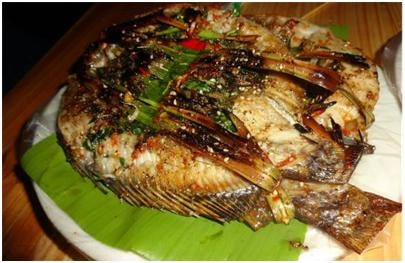COMP3310代做、代寫C++, Java/Python編程
時間:2024-04-16 來源: 作者: 我要糾錯
Page 1 of 3
COMP3310 - Assignment 2: Indexing a Gopher.
Background:
• This assignment is worth 12.5% of the final mark.
• It is due by 23:55 Friday 26 April AEST (end of Week 8)
• Late submissions will not be accepted, except in special circumstances.
o Extensions must be requested as early as possible before the due date, with suitable
evidence or justification.
• If you would like feedback on particular aspects of your submission, please note that in the
README file within your submission.
This is a coding assignment, to enhance and check your network programming skills. The main focus is on
native socket programming, and your ability to understand and implement the key elements of an
application protocol from its RFC specification.
Please note that this is an ongoing experiment for the course, trialling gopher for this assignment. We may
discover some additional challenges as we go, that requires some adjustments to the assignment activities, or
a swap of server. Any adjustments will be noted via a forum Announcement.
Assignment 2 outline
An Internet Gopher server was one of the precursors to the web, combining a simple query/response
protocol with a reasonably flexible content server, and a basic model for referencing and describing
resources on different machines. The name comes from the (Americanised) idea to “go-for” some content…
and also the complexity of their interconnected burrows1
.
For this assignment, you need to write your own gopher client in C, Java or Python2,3
, without the use of any
external gopher-related libraries. The client will need to ‘spider’ or ‘crawl’ or ‘index’ a specified server, do
some simple analysis and reporting of what resources are there, as well as detect, report and deal with any
issues with the server or its content.
Your code MUST open sockets in the standard socket() API way, as per the tutorial exercises. Your code
MUST make appropriate and correctly-formed gopher requests on its own, and capture/interpret the results
on its own. You will be handcrafting gopher protocol packets, so you’ll need to understand the structures of
requests/responses as per the gopher RFC 1436.
We will provide a gopher server to run against, with a mix of content – text and binary files, across some
folder structure, along with various pointers to resources.
In the meantime, you SHOULD install a gopher server on your computer for local access, debugging and
wiresharking. There are a number available, with pygopherd perhaps the more recently updated but more
complex, and Motsognir, which is a bit older but simpler. If you find another good one, please share on the
forum.
1 https://en.wikipedia.org/wiki/Gopher
2 As most high-performance networking servers, and kernel networking modules, are written in C with other languages
a distant second, it is worth learning it. But, time is short, and everyone has a different background.
3
If you want to use another language (outside of C/Java/Python), discuss with your tutor – it has to have native socket
access, and somebody on the tutoring team has to be able to mark it.
Page 2 of 3
Wireshark will be very helpful for debugging purposes. A common trap is not getting your line-ending right on
requests, and this is rather OS and language-specific. Remember to be conservative in what you send and
reasonably liberal in what you accept.
What your successful and highly-rated indexing client will need to do:
1. Connect to the class gopher server, and get the initial response.
a. Wireshark (just) this initial-response conversation in both directions, from the starting TCP
connection to its closing, and include that wireshark summary in your README.
b. The class gopher site is not yet fully operational, an announcement will be made when it’s ready.
2. Starting with the initial response, automatically scan through the directories on the server, following links
to any other directories on the same server, and download any text and binary (non-text) files you find.
The downloading allows you to measure the file characteristics. Keep scanning till you run out of
references to visit. Note that there will be items linked more than once, so beware of getting stuck in a
loop.
3. While running, prints to STDOUT:
a. The timestamp (time of day) of each request, with
b. The client-request you are sending. This is good for debugging and checking if something gets
stuck somewhere, especially when dealing with a remote server.
4. Count, possibly store, and (at the end of the run) print out:
a. The number of Gopher directories on the server.
b. The number, and a list of all simple text files (full path)
c. The number, and a list of all binary (i.e. non-text) files (full path)
d. The contents of the smallest text file.
e. The size of the largest text file.
f. The size of the smallest and the largest binary files.
g. The number of unique invalid references (those with an “error” type)
h. A list of external servers (those on a different host and/or port) that were referenced, and
whether or not they were "up" (i.e. whether they accepted a connection on the specified port).
i. You should only connect to each external server (host+port combination) once. Don't
crawl their contents! We only need to know if they're "up" or not.
i. Any references that have “issues/errors”, that your code needs to explicitly deal with.
Requests that return errors, or that had to abort (e.g. due to a timeout, or for any other reason) do not count
towards the number of (smallest/largest)(text/binary) files.
You will need to keep an eye on your client while it runs, as some items might be a little challenging if you’re
not careful… Not every server provides perfectly formed replies, nor in a timely fashion, nor properly
terminated file transfers, for example. Identify any such situations you find on the gopher server in your
README or code comments, and how you dealt with each of them – being reasonably liberal in what you
accept and can interpret, or flagging what you cannot accept.
We will test your code against the specified gopher, and check its outputs. If you have any uncertainties
about how to count some things, you can ask your tutor or in the forum. In general, if you explain in your
README how you decide to count things and handle edge-cases, that will be fine.
You can make your crawler's output pretty or add additional information if you'd like, but don't go
overboard. We need to be able to easily see everything that's listed here.
Page 3 of 3
Submission and Assessment
There are a number of existing gopher clients, servers and libraries out there, many of them with source.
While perhaps educational for you, the assessors know they exist and they will be checking your code against
them, and against other submissions from this class.
You need to submit your source code, and a README file (text/word/pdf). Any instructions to run the code,
and any additional comments and insights, please provide those in the README. Your submission must be a
zip file, packaging everything as needed, and submitted through the appropriate link on wattle.
Your code will be assessed on [with marks% available]
1. Output correctness [45%]
o Does the gopher server correctly respond to all of your queries?
o Does your code report the right numbers? (within your interpretation, perhaps)
o Does your code cope well with issues it encounters?
o Does your code provide the running log of requests as above?
2. Performance [10%]
o A great indexer should run as fast as the server allows, and not consume vast amounts of
memory, nor take a very long time. There won’t be too many resources on the server.
3. Code “correctness, clarity, and style” [45%]
o Use of native sockets, writing own gopher requests correctly.
o Documentation, i.e. comments in the code and the README - how easily can somebody else
pick this code up and, say, modify it.
o How easy the code is to run, using a standard desktop environment.
o How does it neatly handle edge-cases, where the server may not be responding perfectly.
During marking your tutor may ask you to explain some particular coding decisions.
Reminder: Wireshark is very helpful to check behaviours of your code by comparing against existing gopher
clients (some are preinstalled in Linux distributions, or are easily added). There are a number of youtube
videos on gopher as well that e.g. show how the clients work. Your tutors can help you with advice (direct or
via the forum) as can fellow students. It’s fine to work in groups, but your submission has to be entirely your
own work.
請加QQ:99515681 郵箱:99515681@qq.com WX:codinghelp
標簽:















